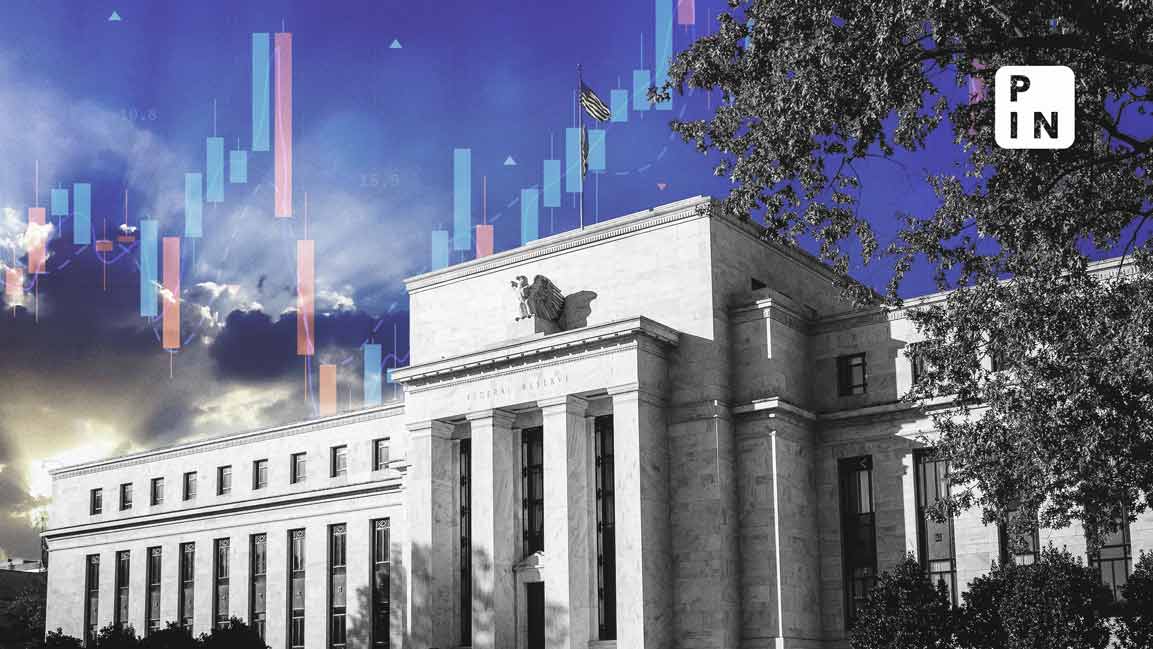- | 2:00 pm
Stocks hit all-time highs before retreating after outsized Fed rate cut
The Fed voted to lower interest rates by a massive 50 bps, its first reduction since 2020, as it shifted its focus from fighting inflation to spurring growth

India’s benchmark indices, the Sensex and Nifty, rose to record highs before retreating on Thursday after the US Federal Reserve cut interest rates overnight by a half-percentage point.
The Fed voted on Wednesday to lower interest rates by 50 basis points, its first reduction since 2020, aimed at strengthening the US economy while ditching its two-year focus on keeping a tight leash on inflation. One basis point is one-hundredth of a percentage point.
“In light of the progress on inflation and the balance of risks, the Committee decided to lower the target range for the federal funds rate by 1/2 percentage point to 4-3/4 to 5%,” the Fed said in a statement.
“In considering additional adjustments to the target range for the federal funds rate, the Committee will carefully assess incoming data, the evolving outlook, and the balance of risks. The Committee is strongly committed to supporting maximum employment and returning inflation to its 2% objective,” it added.
The 30-share Sensex index rose by 236.57 points or 0.27% to 83,184.80 on Thursday, while the 50-stock Nifty surged 38.25 points or 0.15% to 25,415.80 from the previous session’s close.
All 13 sectoral indices were in the green, with the Nifty IT index leading the charge with a 1.5% jump driven by Infosys Ltd, Tata Consultancy Services Ltd, and LTIMindtree Ltd. The Nifty Bank rose about 1%, led by HDFC Bank Ltd, Axis Bank Ltd, and ICICI Bank Ltd.
The fear or volatility index, the India VIX, slumped almost 9% to 12.
Earlier in the day, markets across the Asia-Pacific rose in reaction to the Fed’s 50 bps cut, while stocks in the US had closed Wednesday with minor losses despite an initial intraday surge.
The Fed decision was not unanimous, though, as Michelle Bowman became the first Fed governor to vote against an interest-rate decision since 2005.
When 11 of the Fed’s voting members cast their votes, backing the half a percentage point reduction in the Fed’s policy rate, Bowman opted for a quarter-point rate cut.
Of the overall 19 policymakers who participate in the two-day rate-setting meetings, only 12 cast their votes on the policy decision. These include eight permanent voters, including seven members of the board and the president of the New York Fed. The 11 remaining Fed presidents take one-year turns at the ballot box in groups of four.
The projections accompanying the decision indicated that, although officials backed an additional 50 bps in cuts in the last two meetings later this year, there is still division among policymakers on the extent of further easing needed to ensure inflation reaches the central bank’s 2% target. Out of 19 policymakers, seven anticipated just 25 bps of extra cuts in 2024, while two were against any further action this year.
Investors, however, are now looking at another 70 bps of rate cuts at the November and December meetings, Bloomberg reported.
Meanwhile, with the Fed effecting an outsized 50 bps rate cut, all eyes will be on the Reserve Bank of India (RBI), whose rate-setting monetary policy committee (MPC) will meet from 7-9 October.
Analysts are divided on whether RBI will follow suit, with some expecting a cut in October and others seeing one at its December meeting.
Unlike the Fed, which has shifted its focus from inflation to growth, RBI still has its guns trained on inflation, and may opt for a wait-and-watch approach, analysts said.
India’s retail inflation rose marginally to 3.65% in August from 3.54% in July but was higher at 5.08% in June. Food inflation, which constitutes half of the Consumer Price Index, was up 5.66%.












